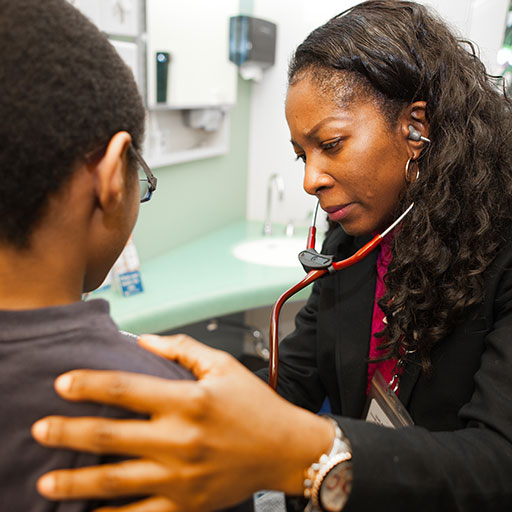Your training experience
As a pulmonary and critical care fellow at Mayo Clinic, you'll have access to robust clinical, educational, and research resources. You can choose from three clinical pathways to tailor your training to your career goals.

The three-year Pulmonary and Critical Care Medicine Fellowship at Mayo Clinic's campus in Rochester, Minnesota, emphasizes clinical training and research, and customizes training depending on your individual career goals. The fellowship program offers three different clinical pathways to cater to each fellow's interests and aspirations.
Mayo Clinic's staff of 64 pulmonologists and intensivists serve as teachers and mentors. These world-class specialists with various backgrounds offer a rich diversity of clinical expertise and research opportunities during your training. Thousands of diagnostic and therapeutic pulmonary and critical care procedures are performed annually at Mayo Clinic using the most advanced diagnostic and therapeutic tools to ensure the best outcomes for patients.
As a fellow in the three-year Pulmonary and Critical Care Medicine Fellowship, you have access to a training experience that offers:
Check out the Pulmonary and Critical Care Medicine Fellowship's YouTube channel to learn more about clinical and procedural experiences, opportunities for research and education, the interview process, and more!

Video Overview
board certification pass rate
best hospital for pulmonary & lung surgery in the nation (U.S. News, 2023-2024)
customizable pathways

As a pulmonary and critical care fellow at Mayo Clinic, you'll have access to robust clinical, educational, and research resources. You can choose from three clinical pathways to tailor your training to your career goals.

Our approach offers you the finest teaching and broadest patient-care experience possible during an enriching, hands-on fellowship.
The Pulmonary and Critical Care Medicine Fellowship fulfills the requirements for training as stated by the American Board of Internal Medicine and is accredited by the Accreditation Council for Graduate Medical Education (ACGME).
You will be eligible to take the American Board of Internal Medicine subspecialty examination in pulmonary and critical care medicine upon completion of the fellowship.
The Pulmonary and Critical Care Medicine Fellowship began in 1965. Since then, more than 210 physicians have completed training. Fellows are recruited annually through the National Resident Matching Program Specialties Matching Service process.
Mayo Clinic also offers a two-year Pulmonary Medicine Fellowship in Rochester, Minnesota, to become board eligible in pulmonary medicine. This fellowship offers the opportunity to pursue additional fellowships upon completion. Subspecialty fellowships within the division include Sleep Medicine Fellowship, Interstitial Lung Disease and Pulmonary Vasculitis Fellowship, Pulmonary Hypertension Fellowship, or pulmonary academics. Please contact our program coordinator for further information.
Our procedural training is among the best in the country.
Each fellow has three months of dedicated bronchoscopy time. Over the course of the fellowship, a typical fellow performs hundreds of bronchoscopies, including numerous transbronchial biopsies, and generally 50 or more endobronchial ultrasound (EBUS)-guided biopsies. Mayo's newly created pleural service rotation provides dedicated time for management of pleural disease and features placement and management of multiple types of chest tubes, including pigtail, large bore, and tunneled indwelling pleural catheters.
At Mayo Clinic, Pulmonary and Critical Care Medicine fellows perform their own intubations and airway management for all their intensive care unit (ICU) patients, including difficult intubations. This contrasts with many other pulmonary and critical care programs in the country, where anesthesia fellows, rather than pulmonary fellows, perform intubations.
Mayo has a large critical care practice, where physicians manage the sickest patients across various ICUs. As a major referral center, we have patients flown in from other tertiary care centers in South Dakota and North Dakota, Minnesota, Iowa, and Wisconsin. The ICU population also includes complex patients in outpatient care who come here for second opinions and subsequently get ill and require ICU-level care.
The numbers and acuity for fellowship training are more than adequate to sustain a separate Critical Care Medicine Fellowship in addition to the Pulmonary and Critical Care Medicine Fellowship.
While Mayo Clinic's campus in Rochester, Minnesota, does not have a burn unit, the fellowship has an approved elective rotation at Maricopa Medical Center in Arizona, which is close to Mayo's campus in Phoenix/Scottsdale, Arizona.
Mayo Clinic manages many patients on extracorporeal membrane oxygenation (ECMO) for various indications, and a dedicated one-month ECMO rotation is available for Pulmonary and Critical Care Medicine fellows.
Yes. There are opportunities for elective rotations at other Mayo campuses including Arizona and Florida. We also have new opportunities for elective experiences at Mayo Clinic Health System in Eau Claire, Wisconsin, Mayo Clinic Health System in La Crosse, Wisconsin, and Mayo Clinic Health System in Mankato, Minnesota, to experience a community pulmonary and critical care practice.
Elective rotations at other locations are also available, such as a global health experience in an ICU with limited resources through the Mayo International Health Program.


